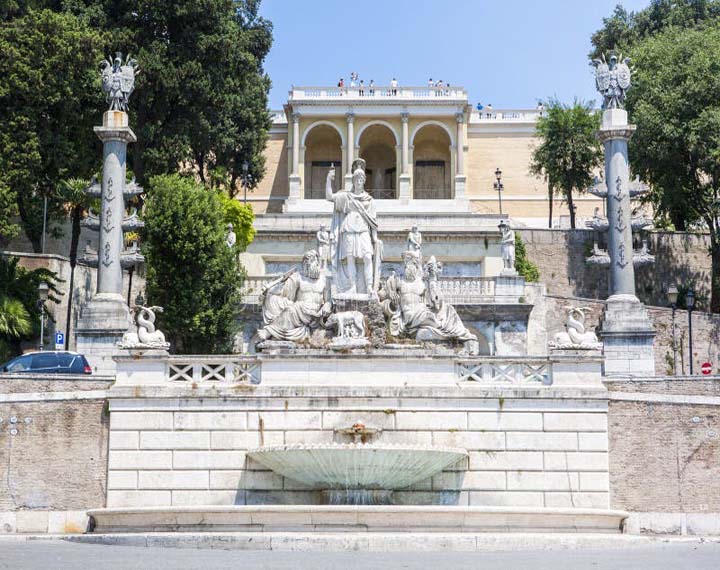
Fountain of the Goddess Roma
The fountain located in the background of Piazza del Campidoglio, boasts a rather complex history linked to the events of one of the most important squares in Rome, seat of the city municipality since the 12th century and built in the 16th century based on a design by Michelangelo Buonarroti (1475-1564).
The fountain, located in the background of the Piazza del Campidoglio, boasts a rather complex history linked to the events of one of the most important squares in Rome, the seat of the city municipality since the twelfth century and built in the sixteenth century to a design by Michelangelo Buonarroti (1475-1564). Author: Matteo Bartolani from Città di Castello Date: 1588 -1589 Materials: marble Original power supply: Felice aqueduct In 1538, when its urban planning began, the square already had two colossal marble statues depicting the Nile and the Tigris (later transformed into the Tiber with the addition of the she-wolf and the twins) then placed by Michelangelo in 1543 on two plinths at the foot of the new staircase of the Senatorial Palace, on either side of the very high central niche destined to house a colossal statue of Minerva in 1583.
Author: Matteo Bartolani from Città di Castello
Dating: 1588 -1589
Materials: marble
Original supply: Felice aqueduct
In 1538, when its urban planning began, the square already had two colossal marble statues depicting the Nile and the Tigris (later transformed into the Tiber with the addition of the she-wolf and the twins) which were then placed by Michelangelo in 1543 on two plinths at the foot of the new staircase of the Senatorial palace, on the sides of the very high central niche destined to house a colossal statue of Minerva in 1583.
No fountain was planned in the area at the time, as the Capitoline Hill remained without running water until the construction of the Felice aqueduct, built by order of Pope Sixtus V (1585-1590), a work in which the Capitoline Administration participated with the the purchase of one hundred ounces of water to finally supply the hill and build new public fountains.
Only in 1588, therefore, Matteo Bartolani da Castello (news 1525/30-1597) was entrusted with the project of a monumental fountain, through a competition wanted by Sixtus V himself who intended to celebrate the construction of the new aqueduct also on the Capitoline square, as evidenced some inscriptions placed on the balustrade of the square itself. The fountain consists of a double marble basin with a mixtilinear plan placed between the two statues of the Nile and the Tiber, simply decorated with five coats of arms and fits into the square in a discreet and respectful way of Michelangelo’s design.
Finally, in 1593 the statue of Minerva in the central niche was replaced with a porphyry and marble statue from the Domitian era, depicting a small, seated Minerva, mounted on three overlapping bases, and reinterpreted as the Goddess of Rome.


